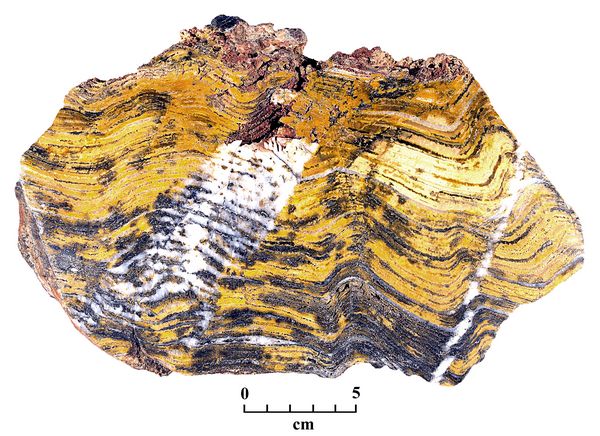Athena Review Image Archive ™
Stromatolite from Pilbara Craton, Australia

Stromatolite from Pilbara Craton, Australia (after Schopf 1999).
Stromatolites are fossilized traces of layers of large colonies of cyanobacteria and other microbes which occupied shallow coastal water settings, of the type that today might contain coral reefs. These mat-like layers of fossil imprints called stromatolites represent the oldest known life forms in the fossil record of Earth, dating from the Archaean stage of the Precambrian period.
The Archean, lasting from about 3900-2600 mya, represents the earliest rock formations preserved in continental bedrock masses, called cratons. The oldest, dated at about 3.5 billion years ago, are found in Australia, Canada, and South Africa. Some of these cratons contain sites with the earliest fossil traces of life.
One such site is a chert formation in the Pilbara Craton, located in northwest Australia, identified as one of the earliest well preserved crustal formations. Along with the Kaapvaal Craton in South Africa, Pilbara may have once been part of an early land mass called the Vaalbara Supercontinent (Schopf 1999).
In the Strelley Pool Chert formation in the Pilbara Craton, sections of layered stromatolites such as shown in this image are preserved, dating from the Paleoarchaean stage of the Precambrian, between 3.6-3.2 billion years ago.
Reference:
Schopf, J.W. 1999. Cradle of Life: The Discovery of Earth's Earliest Fossils. Princeton Univ. Press, Princeton.
Copyright © 1996-2020 Rust Family Foundation (All Rights Reserved).